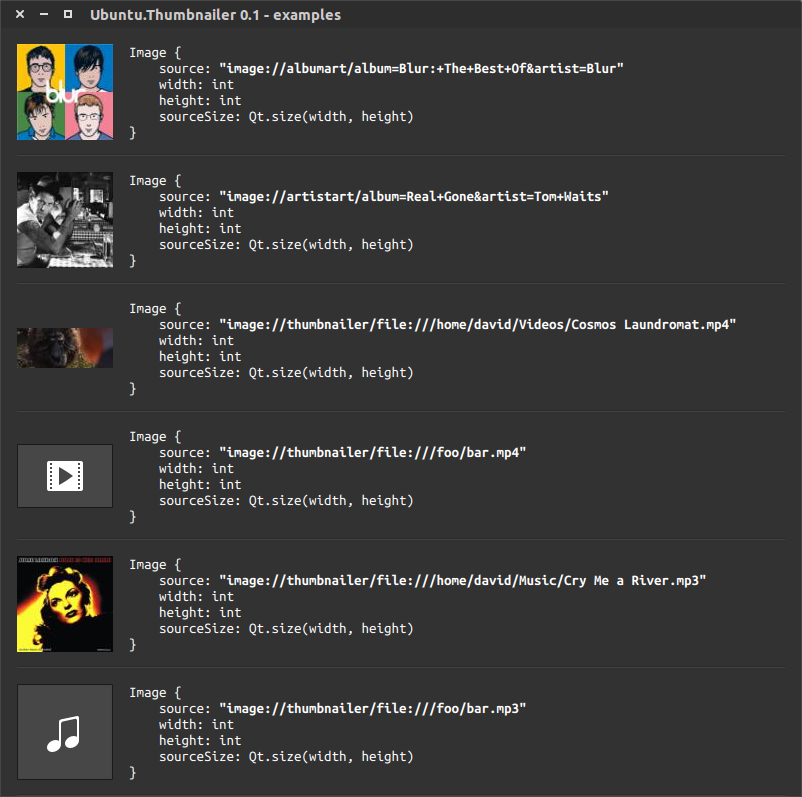Tutorials - using the Ubuntu thumbnailer
The Ubuntu Thumbnailer QML plugin gives you extremely fast access to thumbnails of pictures and videos stored locally, as well as music artwork (albums and artists) using a third party backend.
Why use the thumbnailer
We believe this thumbnailer solves a whole range of issues, not only for galleries and media players, but for all developers wanting to enrich their app with media content.
Speed
Using thumbnails instead of loading and reducing arbitrary images in your code will dramatically improve loading speed of your components. This thumbnailer is heavily optimized for speed and caching.
Developer time
Video thumbnails often need to be generated with specific libraries (such as FFMPEG) you would need to embed in your package. A common service is a clean solution for all apps consuming it.
Consistency
Users get the same thumbnails for the same content between apps. A music album looks the same everywhere on their device.
How to use it
Importing Ubuntu.Thumbnailer in your QML code will give new powers to
Image components, via dedicated URI schemes for your image source:
"image://thumbnailer/<file URI>": local videos, audio files and pictures"image://albumart/album=<album>&artist=<artist>": any music album (online query)"image://artistart/album=<album>&artist=<artist>": any music artist (online query)
Note that for privacy reasons, user devices won't be talking directly to the third party backend (currently: 7digital), all responses and queries are proxied by the musicproxy server.
Successful responses for such online queries are cached locally to avoid unnecessary network use.
## Example import QtQuick 2.0 import Ubuntu.Components 1.3 import Ubuntu.Thumbnailer 0.1 Image { source: "image://thumbnailer/"+Qt.resolvedUrl("data/videos/file.mp4") width:units.gu(20) height:width fillMode:Image.PreserveAspectFit sourceSize:Qt.size(width, height) anchors.centerIn: parent }
Note that you need to specify sourceSize for the thumbnailer to know at
which size to produce the thumbnail.
A few other examples

Size and ratio
- The thumbnailer always preserves aspect ratio.
- It never up-scales. Returned thumbnails may be smaller than what was asked for because the thumbnailer never up-scales. If the original artwork is smaller than what was asked for, the largest possible thumbnail will be returned.
- Thumbnails are never larger than 1920 pixels in the larger dimension (even if the original artwork is larger).
- Requests with either dimension
< 0are invalid and return an error. - Requests for
(0,0)mean "as large as possible" (subject to the 1920 pixel limit). - Requests for
(x,0)or(0,y)mean "no larger than x or y", while keeping the original aspect ratio.
 Ubuntu Phone documentation
Ubuntu Phone documentation